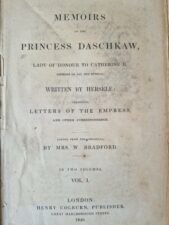WOMEN AND MONEY
George Campbell Gosling, University of Wolverhampton

This is all about women’s historic relationship with money.
That thought didn’t occur to me until quite late in the day. I’d spent a decade researching Britain’s pre-NHS hospital systems. Over which time the introduction of patient payments into the voluntary hospitals, and the women who were brought in to administer them – the Lady Almoners, or medical social workers as they came to be known – had gradually moved themselves centre stage.
I was aware the male doctors and hospital secretaries had been unhappy at the idea of getting involved in the grubby business of handling money from patients. I knew there was a profile to those who were brought in to take on the task. They were middle-class, educated, unmarried women. But it took me a while to really take seriously the question: why them?
Answering that question isn’t just a matter of understanding better the history of medical social work. The case of the almoner can also shed some light on the wider history of women and specifically the social meanings of their public and private relationships with money.
It adds to a growing body of work showing that, despite a host of legal, social and cultural obstacles, women in modern Britain and beyond have frequently been involved in the development of the stock market and other forms of financial management, commanding knowledge and gaining valuable experience of money matters in the process. Historians such as Alison Kay have rediscovered the historic place of women within the world of business and as investors, and done much to challenge assumptions that women were less successful in these endeavours than their more numerous male counterparts.
What has persisted, as Janette Rutterford and Josephine Maltby have discussed, is a characterisation of women’s financial activities as conservative and risk-averse. This was certainly an influential notion in the years following the First World War, when patriotic participation in the War Loans scheme encouraged a general advance of women as investors. These women were widely considered to treat savings and investments differently to men, with financial journalist Hartley Withers noting in 1930 ‘that wide-eyed sceptical curiosity that makes women so formidable’.
The opportunity to engage in financial matters in public arenas was in many respects a matter of class. The ways women of different class engaged with finance between the eighteenth and twentieth centuries was sketched out by Laurence, Maltby and Rutterford:
“Within the household, married and unmarried women were concerned with income and expenditure. The development of banks, the stock market, government debt and a host of financial ‘products’ such as bonds and lottery tickets required middle-class as well as wealthier women to make judgements and decisions about how to dispose of their funds. The growing numbers of women in waged work required women further down the social scale to take an active interest in pensions and savings.”
Where Amanda Vickery found that being prudent and economical were advantages for women in the eighteenth-century middle-class marriage market, the case of the hospital almoner suggests the feminine expertise of domestic finances had professional purchase in the early twentieth. When patient payment schemes were introduced it was female social workers who were employed to manage them. But why was it them rather than male financial clerks, or even the male inquiry officers they often replaced?
The answer speaks both to unspoken assumptions about the hospital – that it should operate as a charity rather than a business – and to those about the nature of women’s abilities, authority and expertise. A risk-averse feminine approach to professional financial matters cannot be entirely separated from frugality, thrift and resourcefulness in domestic management borne of, as Elizabeth Kiely and Marie Leane put it, a relationship with money as ‘a family, as distinct from an individual, resource’. It is this which sits behind the thinking that women were not only equally but specifically suited to handling patient payments.
It’s an episode in women’s history that therefore suggests a separate sphere of financial expertise with public, professional cache. It nuances rather than challenges the governing assumptions of distinctly female financial behaviours. Where women were typically assumed (and still are by some) to be conservative and risk-averse, almoners capitalised on the corollary that they would therefore be cognisant of social conditions above hard-nosed financial calculations. They were not so much fighting gendered assumptions as using them to their professional advantage.
The ways in which they could do so changed in the 1940s, with the arrival of a ‘free’ health service.
Find out more in Gender, Money and Professional Identity: Medical Social Work and the Coming of the British National Health Service, published online in an open access form by the Women’s History Review.
